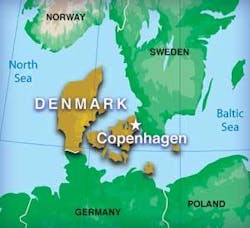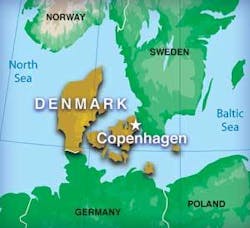Contrary to Macbeth, all is well in Denmark
Steen Erick Nielsen
In 1976 the first high-power CO2 laser was installed in Denmark for cutting thin sheet metal. Since then the Danish installed base of industrial lasers has grown steadily, and today the number of units in use for materials processing is in the range of 350-400. Approximately 50 percent of these are CO2 lasers with output power up to 5 kW, mainly used in cutting operations. About 25 percent are different types of Nd:YAG lasers mainly used in welding applications. The remaining units are typically related to the marking and engraving industry. The current there is for hybrid welding techniques and laser surface treatment processes.
Because of present globalization affects, production and jobs are moving from EU/Scandinavia to low-cost developing countries in the Far East and the Eastern part of the EU, more rapidly than ever. Specifically, production operations, including traditional metal joining processes within the metals manufacturing industry, are being severely affected. These processes, such as arc welding, gluing, and brazing, are generally low efficiency and they are difficult to automate. Advanced fully automated processes like laser welding and laser hybrid welding may become the joining methods of the future, especially for the larger and medium sized industries in Scandinavia.
A Scandinavian collaboration project, NORHYB, dealing with laser hybrid welding technology, has recently been initiated, partially sponsored by the Nordic Innovation Centre. The aim of this project is to disseminate information about the technology and to initiate collaboration conditions between R&D facilities and Scandinavian industry.
A second Scandinavian network-based collaboration, NORLAS, also partly sponsored by the Nordic Innovation Centre, links all laser-related activities in Scandinavia together on the web platform www.norlas.com, as the central forum for activities.
NORLAS is also a project collaboration between Nordic research institutes, universities, and the industry regarding laser materials processing technology. The platform has been a dynamic forum for more than 300 members who have the ability to upload and exchange information and experiences and to promote laser technology with links to available information sources, research institutes, and industrial companies. The web site is maintained through a continuous flow of technical issues, research results, news, and information about events like conferences, demonstrations, call for papers, and so on.
The partners directly involved in the NORLAS and NORHYB projects are FORCE Technology (Denmark), The Technical University of Denmark, University of Luleå (Sweden), Lappeenranta University (Finland), SINTEF (Norway), The Technical University of Norway (NTNU), and the Technological Institute of Iceland.
Laser surface treatment techniques such as transformation hardening and cladding have been researched and developed for decades and are now used in the industry related to specific components where special wear and corrosion conditions are present.
Laser cladding is a technique based on the melting/welding of a specific metal composition onto a component surface. This metal is typically added as a powder mixture blown by an inert gas into the melt pool created by a high-intensity laser beam. A surface layer with special resistant characteristics is applied to a certain area of the component.
At FORCE Technology laser fusing techniques have produced a large industrial interest. The specific component surface layer is pre-placed by the use of a thermal spraying technique, and the energy in the laser beam is used to fuse the sprayed coating. Thin layer thicknesses in the range of 0.5 mm, with low dilution of the base material, can be achieved by this technique. Typical coating materials involved include wear- and corrosion-resistant materials such as Stellite, Inconel, or special matrixes, including carbides. The laser fusing technique is also interesting from a production point of view as larger areas can be coated at fairly lower cost than using the traditional laser cladding techniques (see Figures 1 and 2).
FORCE Technology, located near Copenhagen, has offered industrial services in laser materials processing for more than 20 years using CO2 and Nd:YAG lasers with power levels up to 17 kW. Cutting, welding, and surface treatment are the main processes for development activities. Applied research and development in close collaboration with industrial companies as well as job shops are key areas of activity.
For the last 20 years, laser materials processing has been the fastest growing segment among the development of production technologies in Denmark. So far, nothing seems to change this situation.
Dr. Steen Erik Nielsen ([email protected]) is project manager - Innovation in Welding Technology at FORCE Technology (www.force.dk), Brøndby, Denmark.



